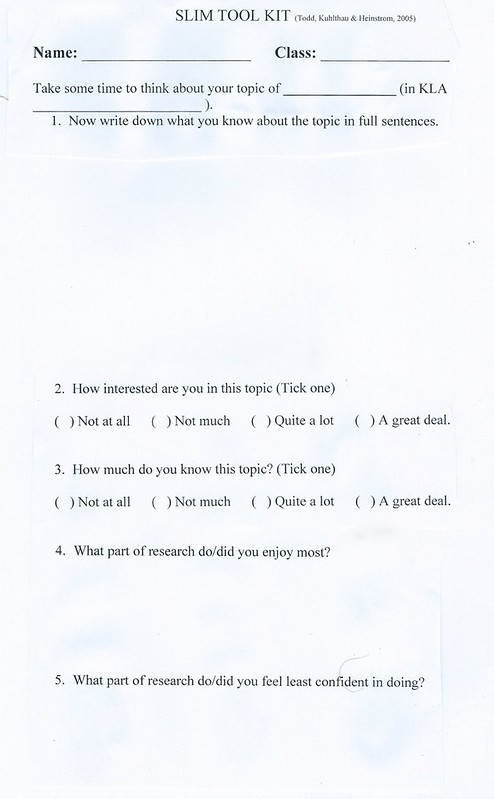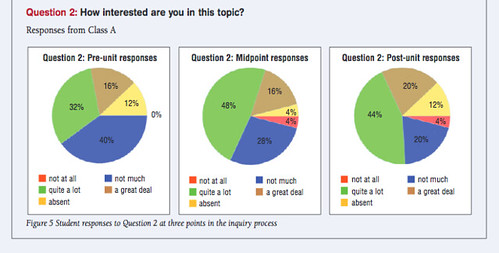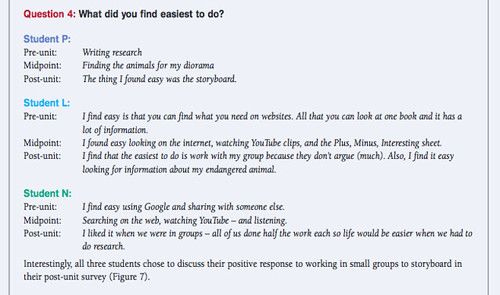Yesterday’s lecture required us to reflect upon our personality, behaviour and relationship management, particularly in relation to the workplace.
Over many years my professional personality has developed in ways that have enabled me to both survive the daily challenges, and (usually) to find enjoyment/satisfaction in my work with students, colleagues and managers. I certainly remember the uncertainty of the early years, and the realisation that I had areas in need of attention if I wanted my teaching career to have longevity. I also recall, in my fourth year of teaching, when a young, new graduate ended up in the room next door as a casual teacher (for a colleague on maternity leave). Suddenly, I found myself mentoring her. My own teaching, programming and class control skills improved dramatically in my quest to be an exemplary role model for her. She definitely brought out the best in me; my diligence and unique talents began to be recognised by other staff members.
As a child, I know I was eager to please people in positions of authority, and often found myself bristling if I witnessed my contemporaries rejecting “the rules”. My early years of high school were quite challenging for me, with social aspects of the playground and classroom not as… predictable? I dislike situations where I find myself an outsider, and high school had felt very different to my primary school years (where I had completed my final year as School Captain).
I am usually gregarious, jovial and loquacious, all of which can be “too much” for some people. It can be a challenge for me to “tone it down”. As an adult in the workplace, I hope I am perceived as someone who will give their best effort at all times, and yet not be too afraid to speak my mind when encountering an injustice, or if I see a better solution to a problem. I do need to know the expected boundaries, and it is excellent when these “rules” have been agreed upon by consensus, or when there seems to have been some logic in evidence, such as the stakeholders using their knowledge and experiences in the setting up of a status quo. My “Glass Half Full” attitude usually serves me in good stead.
As an exercise for this week, we were asked to undertake two online personality tests: the DISC Test – Dominant (Red), Influential (Yellow), Steady/Supportive (Green), Compliant/Cautious (Blue) – and Accetta’s Colours Test. The concept of basic four personality groups goes back as far as 340 BC to Plato. He called the groups Choleric (Red), Phlegmatic (Yellow), Melancholy (Green) and Sanguine (Blue).
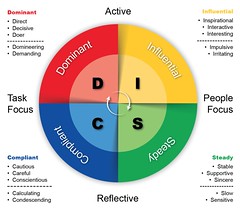
Diagram from https://johnpyron.com/6-benefits-of-disc-profile-assessment/
The DISC Test placed me as a “C/I” for my Basic or Natural style, the set of drives that affect how I view, interpret and interact with the world, ie. the part that happens “in my head”. My Adapted or Environmental style represents the actual behaviours I have “learned to use to be most successful” in a work environment.
“You have a blend of both ‘Cautious’ and ‘Inspiring’ traits. Your ‘Cautious’ traits are probably a little stronger than your ‘Inspiring’ traits. Your style is known as a ‘cross-style’ because your primary traits come from styles ‘across’ the DISC pattern. While this combination occurs in a small percentage of people, it is still perfectly normal (although sometimes difficult to explain).
“Some words that describe you are:
• Critical thinking
• Conscientious
• Diplomatic and
• Tactful.
“You are more reserved than outgoing. You probably like to interact with people to create quality and excellence. You have the ability to be both assertive and friendly when you interact with others.”
Yes! Sounds about right! When I had some difficulty getting back my results from Marc Accetta’s “Colour Test”, I tried a different email address and must have answered the questionnaire slightly different the second time. Accetta sends a video clip explaining the results. The first reply congratulated me on being “a Blue”, and excitedly mentioned my upbeat, gregarious personality, sense of humour and a preference for following a strong leader who treats me nicely. It was delivered in much the way I would have delivered such news. After decades of cosplaying a blue Andorian from “Star Trek”, the colour designation was quite amusing. My results were quite similar for all four colours, meaning my personality is “remarkable balanced”. I take that as a compliment!
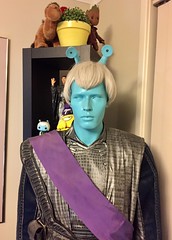
What was most interesting, though, were the points in the summary that did not sound like me, such as tending to be late for appointments. When my other email delivered the news that I was “a Green” instead (although still “remarkably balanced”), the elements I had felt were missing from my “Blue” summary were already in this “Green” one. They represent aspects of my personality I have deliberately attempted to improve over recent years, such as punctuality, being less spontaneous, more careful planning and spending, and gathering data to inform decisions.
Where to go from here? I am very pleased that my time management skills have improved over the decades, and that has become useful in a massage therapy clinic situation. I am sure the people I work alongside would appreciate me striving to be quieter, a little less gregarious and perhaps not as loquacious, especially when the nearest “walls” are thin curtain dividers.

